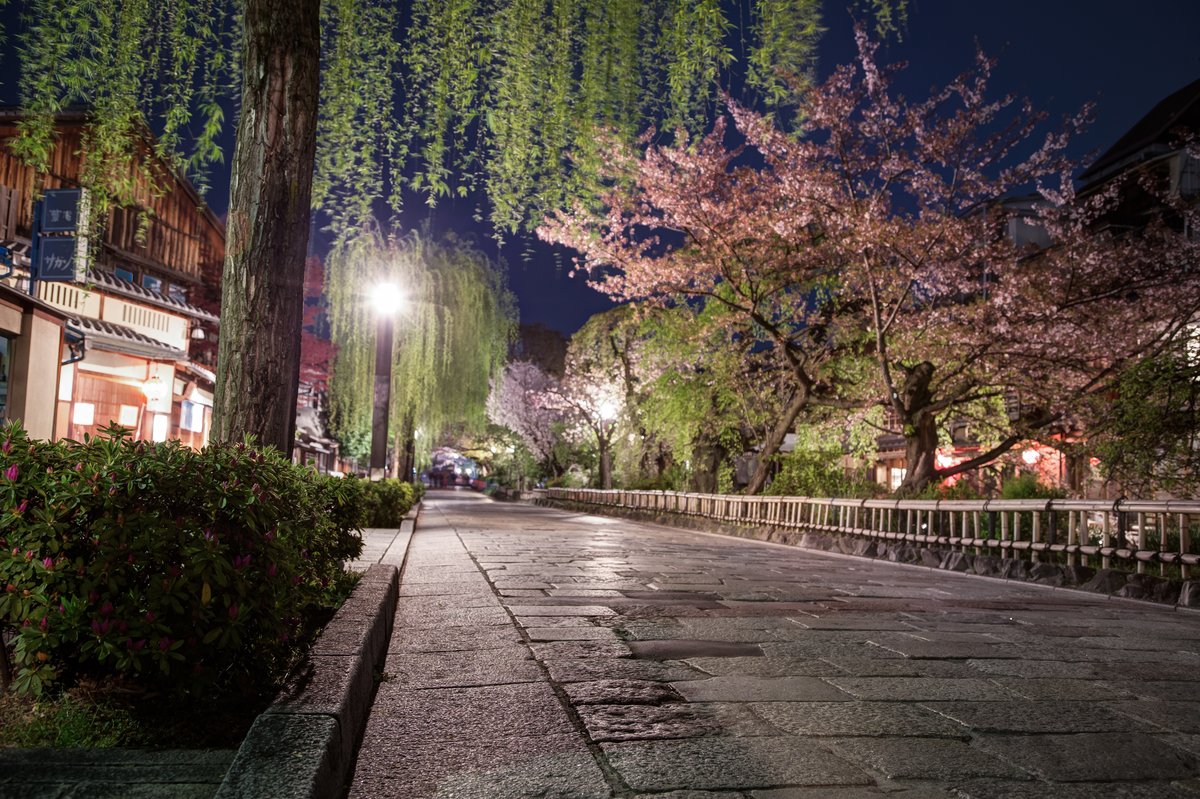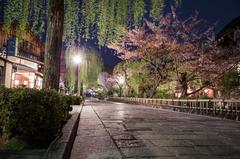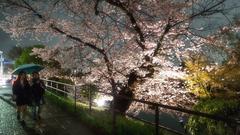
Higashiyama-ku Kyoto: Visiting Hours, Tickets, and Historical Sites Guide
Date: 14/06/2025
Introduction
Higashiyama-ku, nestled along Kyoto’s eastern slopes, stands as one of Japan’s most beautifully preserved districts. Renowned for its atmospheric lanes, iconic temples, and vibrant living traditions, Higashiyama transports visitors through centuries of Japanese culture. From the Heian period’s aristocratic retreats to the bustling pilgrimage routes of the Edo era, the district’s evolution is woven into the fabric of its streets and monuments. Today, careful preservation efforts ensure Higashiyama retains its unique charm, making it an essential destination for anyone seeking to experience the heart of traditional Kyoto (SakuraTrips; Wikipedia; Japan Guide; Traditional Kyoto).
This guide provides comprehensive information on visiting hours, ticket prices, accessibility, top sites, cultural experiences, and seasonal events, ensuring you make the most of your time in Higashiyama.
Historical Development and Cultural Significance
Origins and Early History
Higashiyama’s history traces back to the Heian period (794–1185), when it served as a peaceful refuge for court nobles and Buddhist monks. The area’s spiritual roots are evident in its many ancient temples and shrines (SakuraTrips).
Flourishing in the Muromachi and Edo Periods
During the Muromachi period, shōgun Ashikaga Yoshimasa’s patronage sparked the influential Higashiyama Culture, which shaped Japanese tea ceremonies, Noh theater, and garden design (Wikipedia). In the Edo era, Higashiyama became a commercial and pilgrimage hub, with the development of Kiyomizu-dera and the lively machiya-lined streets of Ninenzaka and Sannenzaka (Japan Guide).
Modern Preservation
Since its designation as a ward in 1929, Higashiyama has been the focus of ongoing preservation. Restoration of historic structures, undergrounding of utilities, and strict urban planning maintain the district’s authentic ambiance (Traditional Kyoto).
Must-See Historical Sites: Visiting Hours and Ticket Information
Kiyomizu-dera Temple
- Hours: 6:00 AM – 6:00 PM (April–September); 6:00 AM – 5:30 PM (October–March)
- Tickets: Adults ¥400, Children ¥200
- Accessibility: Some steep slopes and stairs; partial wheelchair access
- Highlights: UNESCO World Heritage Site; panoramic views from the iconic wooden stage; Otowa Waterfall and Jishu Shrine
- Kiyomizu-dera Official Website
Kōdai-ji Temple
- Hours: 9:00 AM – 5:00 PM
- Tickets: Adults ¥600, Children ¥300
- Highlights: Serene Zen gardens, teahouses, seasonal illuminations
- Kodaiji Temple
Yasaka Pagoda (Hokan-ji)
- Hours: Exterior view accessible anytime; interior open only for special occasions
- Tickets: Free to view outside
- Highlights: Five-story pagoda, a striking symbol of the Higashiyama skyline
Ninenzaka and Sannenzaka
- Hours: Open 24/7; shops typically 10:00 AM – 6:00 PM
- Tickets: Free
- Highlights: Stone-paved lanes, traditional machiya, tea houses, artisan boutiques (Tsunagu Japan)
Yasaka Shrine
- Hours: Open 24 hours
- Tickets: Free
- Highlights: Site of the Gion Matsuri festival; vibrant vermilion gates
Chion-in Temple
- Hours: 9:00 AM – 4:30 PM
- Tickets: Approximately ¥600 (admission to select areas)
- Highlights: Japan’s largest wooden gate, “nightingale floors,” tranquil gardens
Travel Tips and Accessibility
- Best Times to Visit: Early morning or late afternoon to avoid crowds; cherry blossom (late March–early April) and autumn foliage (mid-November) are most scenic
- Getting There: Kyoto City Bus routes 100/206 to Kiyomizu-michi or Gion. Train access via Keihan Gion-Shijo or Hankyu Kawaramachi stations
- Accessibility: Many sites feature slopes and stairs; partial wheelchair accessibility at major temples—confirm details before visiting
- Tickets: Purchase at entrances or online for major temples to skip queues
- Guided Tours: Available onsite and through local operators for historical and cultural insights (JR Pass)
Cultural Experiences and Seasonal Events
- Tea Ceremonies and Craft Workshops: Participate in hands-on cultural activities at select temples and shops
- Kimono Rental: Enhance your visit by strolling in traditional attire—many rental shops offer packages including hairstyling and photography
- Festivals: Don’t miss the Gion Matsuri in July, the Hanatoro lantern festival in March, and temple illuminations during spring and autumn
Dining, Shopping, and Local Life
- Cuisine: Enjoy everything from street snacks (yatsuhashi, dango) to refined kaiseki at Gion’s tea houses and restaurants. Reservations are recommended during peak seasons.
- Shopping: Find authentic Kyoto crafts—Kiyomizu-yaki pottery, textiles, incense, and sweets—along Ninenzaka, Sannenzaka, and in Gion. Many shops offer tax-free shopping for visitors.
Practical Visitor Advice
- Etiquette: Dress modestly for temple visits and follow purification rituals. Speak quietly, especially in sacred or residential areas.
- Crowd Management: Visit popular sites early; explore lesser-known temples like Kōdai-ji for tranquility.
- Safety: Higashiyama is very safe, but use basic precautions for valuables.
- Payment: Most sites accept credit/IC cards; small shops may be cash-only. ATMs are widely available.
Frequently Asked Questions (FAQ)
Q: What are the opening hours for Kiyomizu-dera?
A: 6:00 AM – 6:00 PM (April–September); 6:00 AM – 5:30 PM (October–March). Special events may extend hours.
Q: Is Higashiyama accessible for visitors with disabilities?
A: Many major sites offer partial accessibility, but uneven terrain and steps can present challenges. Check each site’s details.
Q: How do I buy temple tickets?
A: Tickets are sold at site entrances; some temples offer online sales.
Q: Can I join guided tours?
A: Yes, guided walking tours are widely available and enrich your experience.
Q: Is kimono rental available?
A: Yes, numerous shops provide kimono and yukata rentals, often with hairstyling and photography options.
Summary and Recommendations
Higashiyama-ku is a living museum of Japanese heritage, offering a seamless blend of ancient traditions, vibrant festivals, and contemporary hospitality. From the panoramic grandeur of Kiyomizu-dera to the lantern-lit charm of Hanatoro, each visit unveils new facets of Kyoto’s cultural heart. Plan ahead for the best experience: check updated hours, book tickets and accommodations early during peak seasons, and consider guided tours for deeper cultural context. For interactive maps, insider tips, and more Kyoto travel inspiration, download the Audiala app and follow our social channels.
Sources and Further Reading
- Complete Guide to Kyoto’s Higashiyama District: Exploring the Historical Treasures of Japan’s Ancient Capital, SakuraTrips
- Higashiyama Culture, Wikipedia
- Higashiyama District - Kyoto Travel Guide, Japan Guide
- Traditional Areas: Higashiyama District, Traditional Kyoto
- Kiyomizu-dera Temple Information, Japan Guide
- Guide to Higashiyama Kyoto, JR Pass Blog
- Higashiyama District Kyoto Tips, Travel Caffeine












































































